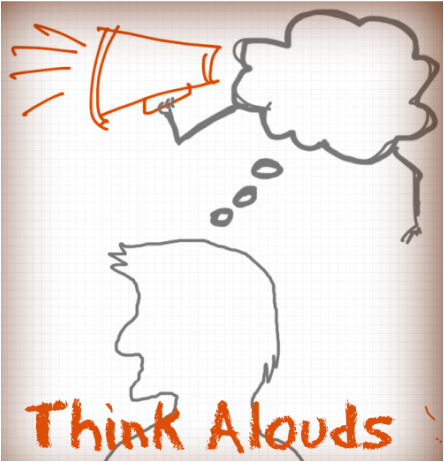10 Instructor and Student Think-Alouds
What is a Think Aloud?
A think-aloud is a reading strategy by which readers orally express their thinking as they are reading a text. These verbalizations could be thoughts, predictions, questions, connections, or reflections.
In a reading class, think-alouds can be used by the teacher or by the students themselves. There are several advantages of using think-alouds in the classroom:
Advantages:
- When teachers use think-alouds, students will notice the instructor’s cognitive process. In other words, as you observe your teacher doing think-alouds, you will realize how good readers become engaged with the text and achieve a deeper understanding of ideas.
- When students use think-alouds, they create communities of readers in the classroom. Groups of students can use think-alouds to monitor their comprehension, which can act as a form of assessment. Student think-alouds can benefit the speaker since they establish a link between oral language and reading and writing. Simultaneously, listeners see models of active reading and reflect upon the verbalized thoughts, which may spark discussions.
- When used with difficult texts, think-alouds slow down the reading process and allow you to monitor your own understanding of complex ideas.
- Consistent practice with think-alouds helps you internalize effective reading strategies and develop metacognitive skills.
- Think-alouds encourage you to approach texts critically, fostering a deeper understanding of the material.
How to Use Think Alouds
The basic premise to produce successful think-alouds is that you, as a reader, will engage in deep thinking while you are reading a text. An engagement with the reading will generate verbal reflections. Here are some reading skills for think-alouds that you may want to use:
- Draw on your background knowledge
- Visualize the events of a text as you read
- Make predictions of what might happen next
- Figure out vocabulary
- Recognize confusion
- Connecting what you read to something else in the text, another text, or your own experience
- Recognize a text’s structure/organization
- Identify/recognize the purpose of a paragraph, subtopic, or the entire reading.
- Pose questions: Did I misread something? Is this a flashback? Did the author just change the idea? What does this word mean? What’s the relationship between these two subtopics? What does “it” refer to in this sentence?
The content on this PB page has been paraphrased from the websites below. Ideas have been blended to configure this information. For specific details, and to learn more about these topics, visit:


